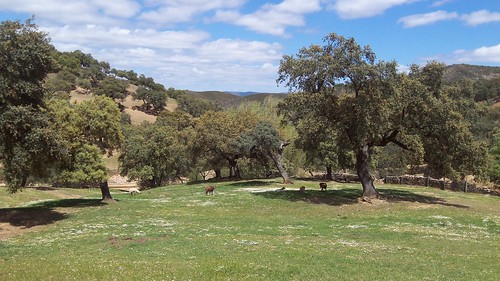
I've finally paid my time, for all the bad cheese jokes I have ever told. I wrapped hundreds of wheels of queso (cheese) in clingfilm, whilst being serenaded by an Andalucian farmer, punctuating flamenco wails with shouts of "Ḿary Poppins!". In fact he did have something of a cockney gent to him.
In a bid to eat more and learn more about what I eat, I am volunteer farming across Spain. I've started in the beautiful Sierra de Aracena, a mountain range in Huelva, down south and snuggled close to Portugal. The terrain is imperial. It's almost as if it were painted by Gainsborough and Reynolds on a country retreat. Majestic plunging hills, studded with valient Oak trees, and pasture licked with wild flowers. This is all very important for the taste of the cheese. The lush pasture is perfect grazing for the goats, whose mission is to eat, and whose milk is all the more richer for it. In fact, even the air here has a special affect on the taste of the cheese. The queseria (dairy) is perched high in the hills, where the air is cool at night, even in the most scorching of summers.
Maria Jesus, who inherited the finca (farm) is the business brains behind the queseria, her mini empire includes an organic farm shop, bar with montaditos (little rolls) for 1€ and she also runs cheese making workshops. I'd never considered how you make cheese, though I've certainly eaten my fair share. So I rolled up my sleeves, donned an apron and followed Maria Jesus around like a little sheep for two weeks.
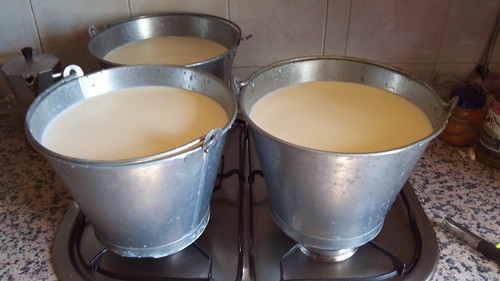
Taking unpasteurised milk straight from the barn, we heated it on the stove until it reached 30 degrees. Then we took our pails outside on the terrace and added 4 tsps of cuajo (enzyme called rennet) and waited. The milk begins to solidify and seperate. After 10 minutes you can cut through it with a knife, a highly satisfying task, slicing it lengthways and sideways until you have a texture that resembles soft cottage cheese.
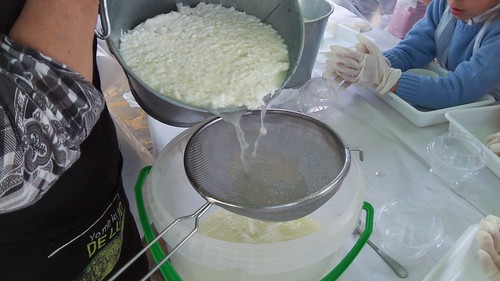
As the cheese seperates you are left with a lot of liquid, the same that you find on the top of a yoghurt. This liquid is rich with protein. Maria Jesus said a cup of this is equal to a fillet of beef, so you should always mix it into your yoghurt. However for cheese you need to strain it away, using a sieve.
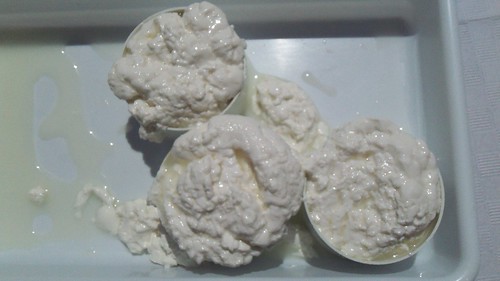
Lump your cheesy mixture into a mould like a cookie cutter and begin squeezing out more liquid by pressing down with your fingers, turning it as you go. This action compacts it nicely, work on both sides to get a nice firm round of cheese that will hold when you remove the mould. Crumble a generous sprinkle of rock salt, top and bottom to preserve.
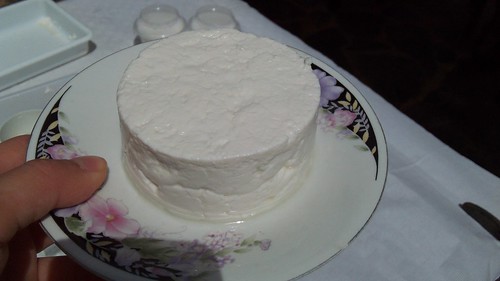
You can eat your perfect little queso fresco the same day, it's delicious, fresh and creamy like mozarella but soft as a cloud. Or leave it to cure, turning it daily so it doesn´t stick and for an even curation. The longer you leave it, the stronger it will be. We had ours with salad, on the side of huevos y patatas fritas (egg and chips). Who knew the Cockneys and the Andaluzs had so much in common.
- All their cheese begins life in the same way, just the length of curation changes the texture and flavour.
- The goats are milked every day and can produce 4 litres of milk each but in reality, each goat will give a different yield.
- If you can get your hands on membrillo (quince jelly), a slice of this is the perfect partner to queso.
- How do you make cheese? Put it passed-your-eyes.

No hay comentarios:
Publicar un comentario